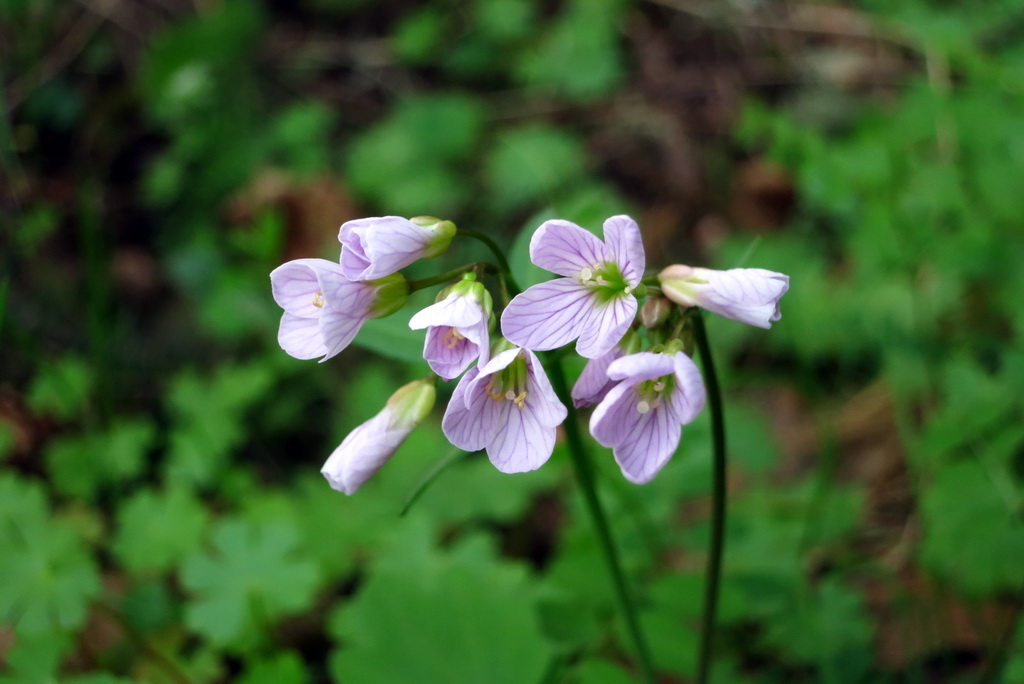It is also gratifying to know we live in a place where so many people appreciate the value and importance of native plants, their habitats, and are willing to act for their protection. I won't hop onto my planter box here, but in that vein, if you are in a planting mood, there are many resources available for choosing the best natives for your location.
There are a number of groups that host native plant shows, festivals, and sales in the coming months. The Native Plant Society of Oregon has a good list of these events on their website, under Wildflower Shows. Locally, Jackson Bottom Wetlands has a native plant sale coming up on April 18th. Portland Audubon has their sale on April 11 and 12 along with experts to answer any questions.
On to the photos now! These spring beauties are all growing in our local parks and/or natural areas, so you'll probably spot them as quickly as we did.
One of my favorite oddly named plants is small (4 - 8 in. high), has a wonderful subtle purple color, and can easily be missed if you are not looking for it: Oaks Toothwart (Cardamine nuttallii var. nuttallii). Lewis & Clark found it growing along the Sandy River on April 1, 1806. It's one of 44 species named after Thomas Nuttall, a U.K. botanist who lived in the U.S. from 1808-1841.
 |
| Oaks Toothwart - Cooper Mountain Nature Park - 3/05/2015 |
For sheer mass, color, and odor, the venerable Skunk Cabbage (Lysichiton americanus) is a local champion! Standing up to a foot tall, these bog dwellers resemble pop art periscopes - native tribes used the large leaves as a kind of wax paper for lining baskets, etc.
 |
| Bog at Ecola State Park - 3/06/2015. Leaves are about a foot tall on these, but will get larger. |
 |
| Skunk Cabbage Flower |
 |
| Red Flowering Currant - Oregon Garden - 3/09/2015 |
We found several Coltsfoot (Petasites frigidus) blooming at the coast, near a fresh water creek in Ecola State Park (3/06/2015). This was the first time we've seen these in bloom so we were struck by the large, softball sized flower clusters. These bloom later at higher elevations as well.
And last but not least, any school child in western Oregon can readily identify this forest favorite: Western Trillium (Trillium ovatum). With its three big leaves and three brilliant white flower petals, it jumps out from the semi-shady tree cover as if to say "look at me." The petals gradually fade to purple, adding to the allure of this noteworthy species.
 |
| At Noble Woods Park - 3/12/2015 |
 |
| At Noble Woods Park - 3/12/2015. Sword ferns in background. |


No comments:
Post a Comment